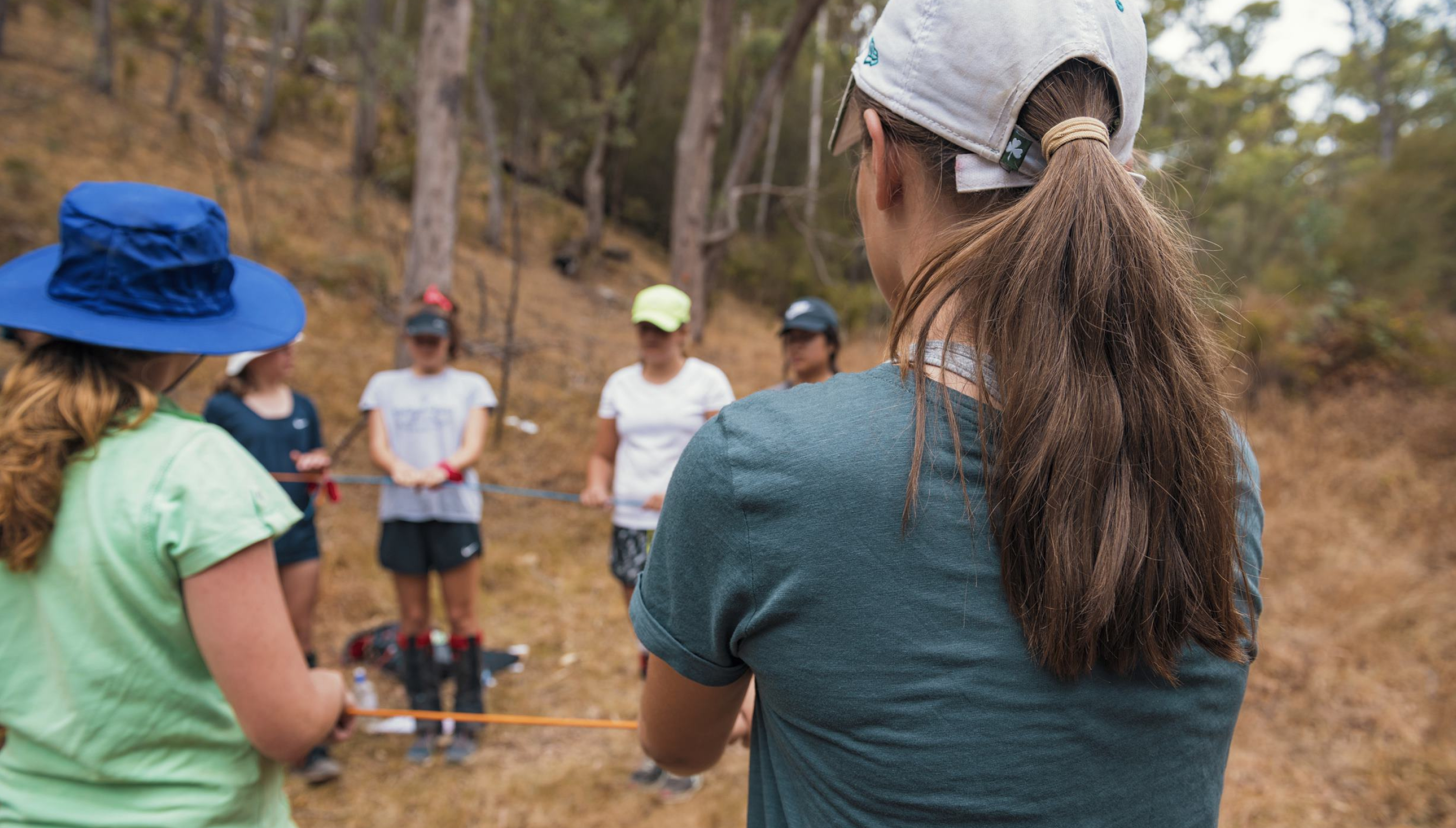At The Outdoor Education Group (OEG), we are typically working with young adults in primary school or in high school. When we think about those students participating in school camp programs and the daily pressures they’re under, the opportunities provided for learning are those designed to help with navigating those unique challenges of young adults.
As young people attempting to navigate a demanding education system, social pressures in an increasingly digital world as well as figuring out who they are, this time spent in nature can be an integral pause and reset.
LEARNING ENVIRONMENT
The most crucial element to note about the difference between learning in nature versus in the classroom, is the physical change in environment. For some students, especially those living in more urban and suburban settings, there may be little to no part of their lives spent in wide-open bushland settings like they’re exposed to on camp.
When we consider that teachers, parents, and students report that nature experiences boost self-confidence, critical thinking, and problem-solving (e.g., Kochanowski and Carr, 2014; Truong et al., 2016) as well as leadership and communication skills, we see how crucial stepping out of the classroom is for students and teachers.
While most educators do not have the luxury of the range and quality of outdoor spaces as in a camp environment, there are elements that can be adopted to ensure students experience a balance of indoor and outdoor space. This could include adding loose parts creative activities to the schedule, hosting a portion of a class in an outdoor space and even including some hands-on involvement with gardens or greenery.
EDUCATION STYLE
Styles of education and curriculum delivery vary from school to school but a common thread is the goal of aiding students to achieve their highest potential on a set of specific criteria.
The difference between this way of thinking and what students experience in an OEG program can be categorised in a few ways.
- Challenge by choice: the level of risk taken on by each individual is entirely up to them. There may be a level of social encouragement, but the road taken is self-driven and there is no bar that everyone is measured by or required to meet.
- Limited set expected outcomes: the goal is simply to learn how to function in nature. Maybe today that means learning how to cook a meal and tomorrow it’s safely crossing a river or navigating differences of opinion in a group. The difference is that whether these challenges are completed, there is no pass or fail - it’s all about having a go.
- Multiple opportunities for internal or spoken reflection: the most consistent style of learning that can be employed from any age is the simple act of observing (self, others and environment) and reflecting on what’s been observed. This is the easiest element to bring into everyday life because it requires little structure - just a little mindfulness and practice.
The beauty of these elements is that they can be used to complement and even enhance any school-based learning style. While not every activity can be devoid of benchmarks, some activities can be introduced that allow for students with varying levels of risk aversion to challenge themselves. A little mindfulness can be introduced by asking reflective questions like: “What did you notice about your approach to this task?” or “How did that make you feel?” or “What could we try next time instead?”.
BENEFITS AND OUTCOMES OF OUTDOOR EDUCATION METHODS
There is a growing amount of evidence in support of the power of nature-based education. Time in nature promotes learning by improving the learners’ attention, levels of stress, self-discipline, interest and enjoyment in learning, and physical activity and fitness. Nature also provides a calmer, quieter, safer context for learning; a more cooperative context for learning and is especially effective for those students who struggle with traditional education methods.
The recharging qualities experienced from time in nature have been found to impact academic achievement, leadership qualities including resilience and communication skills and helps students develop a stronger sense of connection and responsibility to their environment.
All of the outcomes of regular time spent in nature can serve to create better and more functional discussions in the classroom, better retention of information and more calm and well-rounded behaviour from students.
BARRIERS TO ADOPTION
Despite this knowledge of the effects of time in nature for those heading straight back to the classroom, there are still barriers to students having the ability to access and experience facilitated camps in nature that will enrich their lives and enhance their learning experience.
In a study by Waite, Bølling and Bentsen, the main restricting factors summarised as to why students were unable to engage in facilitated outdoor education included the cost of transportation and extra teachers, travel-time, overcrowded curriculum and teacher qualifications.
While it may be some time before the power of outdoor education is recognised to the extent that more can be done within the walls of the school institution, organisations like The Outdoor Education Group allow for structured and facilitated programs that work around the school calendar. The programs can be tailored to ensure a balance of the benefits of outdoor education and an infusion of the curriculum-based outcomes required by a range of school programs.
To learn more about how your school can benefit from outdoor education programs around Australia, enquire today.
